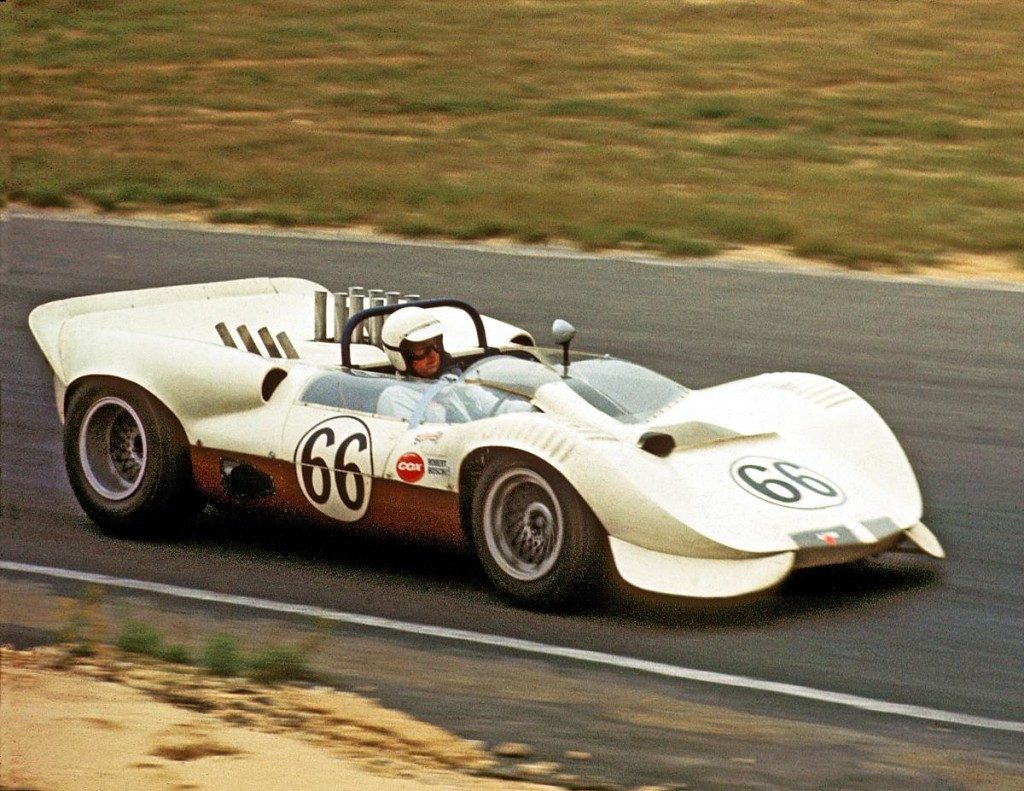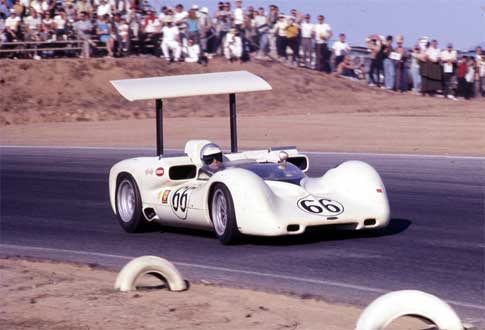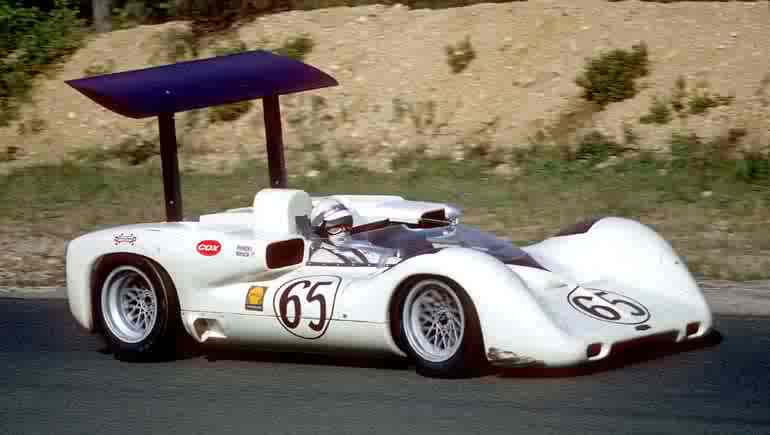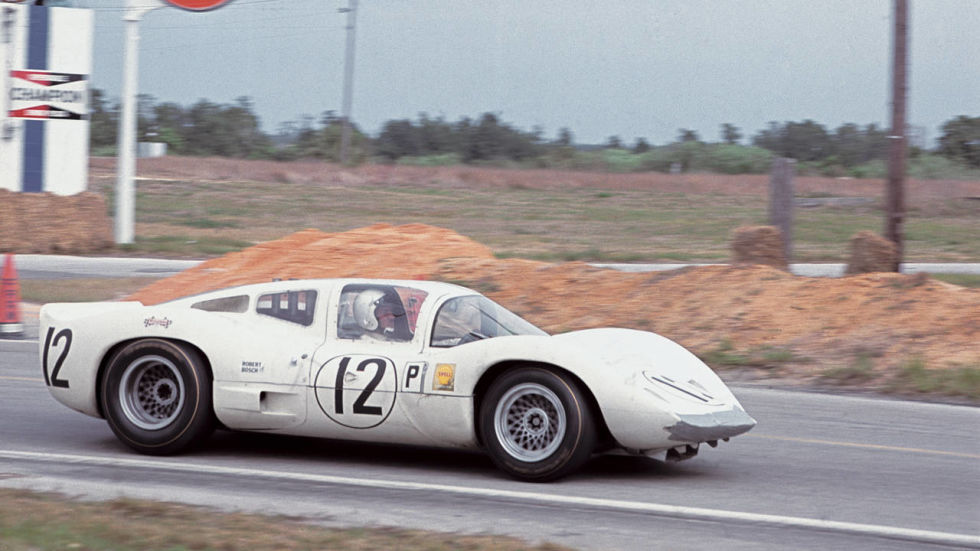"We take our racing cars scary. And that's exactly what the Chaparral 2F is. The brainchild of Jim Hall – a Texan oilman and technical savant – the Chaparral motor racing company toward the end of the 1960s and 1970s produced a "

Chaparral: Formula of One
Modern Formula One might not look the same if small sports car team hadn't made such bold design choices in the '60s
Active aerodynamics, the automatic gearbox and side-mounted radiators are all features of the 21st Century racing machine and features that you would expect to have been first found in Formula One. In fact they emerged from just one racing team in the 1960s.
Conceived by Dick Troutman and Tom Barnes but made famous by Jim Hall and Hap Sharp the Chaparral 2 Series, christened because Hall had bought two Chaparrals but wanted to use the name, became the go to manufacturer for innovation during the 1960s. Taking part in the Canadian-American racing series or Can-Am for short, they introduced some features that no modern open-wheel racing car could live without today.

A mandatory fixture on Formula One cars since its introduction in 2011, DRS or Drag Reduction System is a flap in the rear wing that drivers are allowed to open when they are within one second of the car in front. The idea of a moveable drag reducing device however first appeared, amongst many other ideas, on a Chaparral, specifically the 2E.
The system on the 2E, though a single plane element, worked in the same way as the DRS. Mounted on two tall struts attached to the suspension the wing rested at an angle of eighteen degrees providing downforce through the corners. Yet, thanks to a third pedal (more on that later) in the foot well the driver was able to flatten that wing for low drag and straight line speed. This dinosaur DRS on the Chaparrals stunned the opposition who could only watch and hope it stuck in either configuration.

Remember that third pedal? All entrants at the time had three pedals, a throttle, brake and clutch. The Chaparral once again, was different and once more it introduced an innovation that would not be seen, albeit in a slightly different form, in Formula One on the 1989 Ferrari 640. What was installed in all Chaparrals was a single-speed automatic transmission that meant drivers Jim Hall and Phil Hill could use the more efficient and importantly quicker left foot braking technique achieving multiple pole positions.
Not all the 2E’s innovations were quite as technical as the automatic transmission. To compete with the nimbler Lola T70s Hall needed to improve weight distribution for better traction. To do this he moved the radiators from the front of the car behind and to the side of the driver thus allowing for a more aerodynamic front cowling and more weight over the rear wheels reducing understeer and increasing mechanical grip. A small modification but one that would inspire Colin Chapman and his famous Lotus 72.

However, with innovation comes the problems of experimentation and the Chaparrals suffered from unreliability. The balance transfer from the moving of the rear wing from low to high downforce under braking upset the cars and made them difficult on corner entry. The struts for the wing too, often collapsed as a result of the forces and bumps on North American circuits whilst the automatic transmission broke regularly due to the high stresses placed upon it, often overheating.
Despite this, Jim Hall and his rambunctious racing machines will forever be remembered for experimenting with ideas way ahead of their time and inspiring aerodynamicists for decades to come.

CLICK TO ENLARGE










